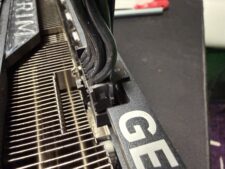Intel to Make 3nm Technology More Accessible to IFS Customers

Intel and Synopsys this week extended their EDA and IP partnership to the company’s Intel 3 and Intel 18A manufacturing technologies. In line with the agreement, Synopsys is set to develop its standardized interface IP for Intel’s 3nm and 1.8nm-class production nodes, which will be beneficial for Intel Foundry Services (IFS) customers adopting these fabrication processes. Meanwhile, a standout aspect of this announcement is Intel’s intention to extend its 3nm-class node to a wider array of external clients.
While chip designers tend to invest a lot into differentiating their IP, most of them tend to license IP-like interfaces and memory controllers. To that end, the availability of an industry-standard IP portfolio of interfaces from Synopsys is crucial for the success of new process technologies, such as the upcoming Intel 3 and Intel 18A, as it enables chip developers to streamline their work and shrink the time-to-market. Unfortunately, it is unclear when exactly Synopsys is set to be ready with its IP for Intel 3, even though that is set to be ready for manufacturing this year. Intel 18A has a bit more time, as it’s set to be ready for production in 2H 2024.
The intriguing part is that Intel is now extending its IFS offerings to the Intel 3 fabrication process, which is a major refinement of its Intel 4 node and does not use any of the company’s ambitious innovations like gate-all-around RibbonFET transistors or the backside power rail called PowerVia. Compared to its predecessor, Intel 3 promises a 18% higher performance per watt, a denser high-performance library, reduced via resistance, and increased intrinsic drive current, which is beneficial primarily for datacenter system-on-chips. Indeed, Intel has announced zero Intel 3-based client products so far, but three datacenter SoCs: Xeon-branded Granite Rapids and Sierra Forest processors, as well as a custom SoC for a major cloud datacenter provider.
The extension of the IP partnership with Synopsys will enable Intel to make its Intel 3 node — a fabrication technology that Intel barely advertised as an offering for IFS customers — more accessible to a wider range of interested parties. That also implies that there are potentially such interested parties.
As for the Intel 18A node, this is a superior version of the company’s Intel 20A process technology that promises up to a 10% improvement in performance per watt, a refined RibbonFET architecture, and line width reduction, which implies a higher transistor density. It will be crucial for Intel 18A to have industry-standard interface IP readily available as soon as possible, as developing things like memory or PCIe controllers and PHY on a 1.8nm node is both expensive and time consuming.













